Induction and suppression of plant defences (Invited Review)
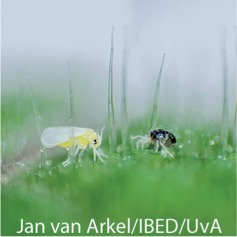
Plants are targets for herbivory by animals that acquire nutrients and energy from their hosts in order to grow and reproduce. Hence plants are selected to evolve resistance, which, in turn, selects for herbivores that can cope with this resistance or have the means to suppress it. Kant et al. (pp. 1015–1051) review the current state of knowledge about plant defences and specifically emphasize insights into herbivore adaptations that allow them to cope with these defences. In addition, they provide an ecological and evolutionary perspective on the ways in which defence resistance and defence suppression by herbivores impact community interactions, and on the conditions favouring the evolution of relevant traits.
Cell biology of lignification in higher plants (Review)
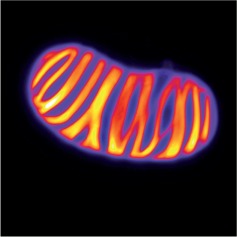
Lignin is a polyphenolic polymer that impregnates the cell wall of specific cell types both during normal cell differentiation and in response to stresses. Barros et al. (pp. 1053–1074) review current understanding of lignin biosynthesis and polymerization, and note that depending on the cell type the lignification process ranges from full autonomy to complete co-operation with surrounding partner cells. The different roles of lignin for the function of each specific plant cell type are clearly illustrated by the multiple phenotypic defects exhibited by knock-out mutants in lignin synthesis, which may explain why no general mechanism for lignification has yet been defined.
The cost–benefit model for botanical carnivory (Review)
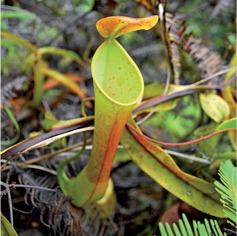
The cost–benefit model for the evolution of botanical carnivory assumes that the traps represent a significant cost for the plant, and that this is outweighed by the benefits from increased nutrient uptake from prey. Pavlovič and Saganová (pp. 1075–1092) summarize results from a wide range of studies and conclude that traps have lower rates of photosynthesis than leaves, and that leaves have higher rates of photosynthesis after feeding. They also note that prey digestion, water pumping and electrical signalling in the traps represent additional carbon costs via increased rates of respiration and decreased rates of photosynthesis. Against these, jasmonate signalling and the inducibility of digestive systems optimize enzyme production in response to prey capture. The similarities between inducible defence mechanisms and botanical carnivory are highlighted.
Defoliation, tree growth and storage of C and N
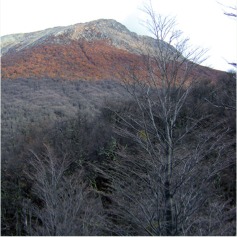
Severe herbivory is presumed to reduce tree growth through resulting limitations of nitrogen and carbon. Piper et al. (pp. 1093–1103) examine the effects of herbivory of Nothofagus pumilio (lenga beech) by caterpillars of Ormiscodes amphimone and find that whilst completely defoliated trees do not die, they show reduced growth for at least 2 years. However, the concentrations of nitrogen and non-structural carbohydrate (NSC) in woody tissues are not reduced, and defoliated trees have higher concentrations of leaf polyphenols and branch NSC, indicating that growth is not limited by C or N. Instead, increased allocation of C to storage or limitation of resources other than C and N appears to be responsible for the decrease in growth.
High molecular diversity in rare European Sorbus domestica
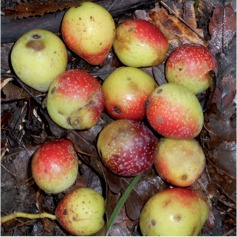
Molecular diversity usually decreases with distance from potential refugia, and species with low population size and a scattered nature are expected to have relatively low genetic diversity. George et al. (pp. 1105–1115) study one of the rarest deciduous tree species in Europe, Sorbus domestica, across its entire distribution and find unexpectedly high levels of molecular diversity within populations irrespective of whether they are located in the south or close to the northern distribution limit of the species. The presence of large population genetic clusters suggests that long-distance gene flow at the landsacpe scale together with molecular mechanisms that helped prevent inbreeding are responsible for the observed pattern.
Floral colour evolution in Nicotiana polyploids
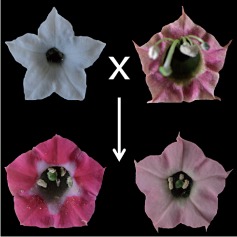
Speciation in angiosperms can be accompanied by changes in floral colour that may influence pollinator preference and reproductive isolation. McCarthy et al. (pp. 1117–1131) investigate whether floral colour shifts accompany allopolyploidy (interspecific hybridization and genome multiplication) in the genus Nicotiana (Solanaceae), and find that floral colour categories have arisen multiple times independently. Comparisons with their progenitor diploids show that some polyploids have unexpected floral colours when perceived by at least one pollinator type. Nicotiana tabacum has a transgressive floral colour due to the inheritance of anthocyanin from its paternal progenitor and a plastid phenotype like its maternal progenitor. They conclude that floral colour evolution in Nicotiana is weakly constrained by phylogeny, but colour shifts do occur in association with both polyploid and homoploid hybrid divergence.
Leaf evolution in early-diverging ferns
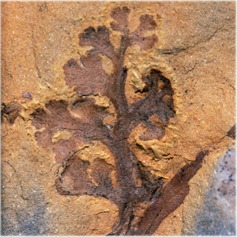
With the exception of angiosperms, the main euphyllophyte lineages (i.e. ferns sensu lato, progymnosperms and gymnosperms) had evolved laminate leaves by the Late Devonian, 385–360 million years ago. However, the evolution of laminate leaves remains unclear for early-diverging ferns. Wang et al. (pp. 1133–1148) identify a novel fernlike taxon, Shougangia bella, from the Late Devonian that has laminate leaves on higher orders of vegetative and fertile branches. This fossil plant suggests that fernlike plants, along with other euphyllophyte lineages, had independently evolved megaphylls by the Late Devonian, possibly coinciding with rapidly declining levels of atmospheric CO2. The laminate pinnules of fernlike plants are homologous with planate ultimate appendages, and their fertile organs show an evolutionary increase in complexity.
Cadmium translocation by contractile roots

Contractile roots are mostly studied in connection with their ability to shrink and pull the above-ground plant parts deeper into the soil. Lux et al. (pp. 1149–1154) compare the unusual structure of these roots in Tritonia gladiolaris with regular, non-contractile roots of Zea mays and find that the process of contraction requires specific anatomical adaptation of the root base, with less-lignified and less-suberized tissues in comparison with the subapical part of the root. These unusual developmental characteristics are accompanied by more intensive translocation of cadmium ions from the basal part of contractile roots to the leaves than from the apical–subapical root parts. In the non-contractile roots of maize the opposite effects are seen, with higher uptake and transport by the apical parts of the root and lower uptake and transport by the basal part.
Strigolactones and adventitious root formation in rice
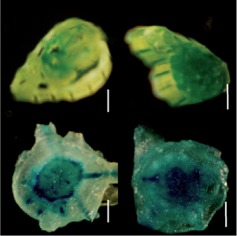
Strigolactones (SLs) and their derivatives are plant hormones that have recently been identified as regulating root development. Sun et al. (pp. 1155–1162) study adventitious roots (ARs) in SL-deficient (d10) and SL-insensitive (d3) mutants of rice, Oryza sativa, and find that d mutants exhibit reduced AR production compared to the wild type. Application of GR24 (a synthetic SL analogue) increases the number of ARs and average AR number per tiller in d10, but not in d3. The results suggest that AR formation is positively regulated by SLs via the D3 response pathway. A positive effect of application of exogenous auxin and the opposite effect of application of NPA (a polar auxin transport inhibitor) on AR number in wild-type plants also suggests the importance of auxin for AR formation, but the interaction between auxin and SLs is complex.
Endogenous hormones and fructan metabolism in Chrysolaena
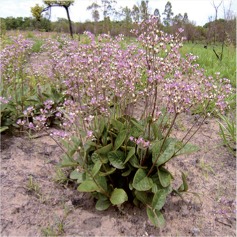
Chrysolaena obovata (Asteraceae) of the Brazilian Cerrado accumulates inulin-type fructans in the rhizophores, the underground reserve organs of cauline origin. Rigui et al. (pp. 1163–1175) sample plants in the field and find correlations with the dry and wet seasons throughout the phenological cycle between fructan content and composition, fructan enzyme activities and expression, and ABA and IAA contents. During sprouting, high IAA concentrations and plant growth occur concomitantly with low ABA concentration and inulin hydrolysis. Conversely, as plants enter the dormancy phase, high ABA concentration occurs in parallel with low fructan synthesis. The results suggest that the co-ordinated action of carbohydrate metabolism and hormone synthesis enables C. obovata to survive unfavourable field conditions.
Divergent selection along climatic gradients in a rare endemic
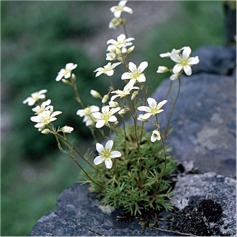
The effects of habitat fragmentation on quantitative genetic variation in plant populations are still poorly known. Walisch et al. (pp. 1177–1190) study variation within and among 22 populations from the whole fragmented distribution area of the rare rock plant Saxifraga sponhemica and find unexpectedly strong evidence for divergent selection, in contrast to previous results from rare plant species. Most population trait means are significantly related to climate gradients, quantitative genetic differentiation increases with geographical distance even when controlled for neutral molecular divergence, and QST exceeds FST for some traits. The evolvability of traits is negatively correlated with the degree of differentiation among populations (QST), i.e. traits under strong selection show little genetic variation within populations.


